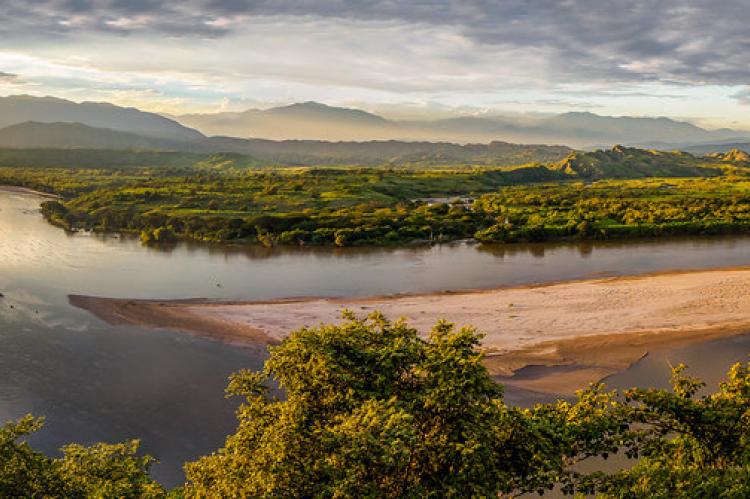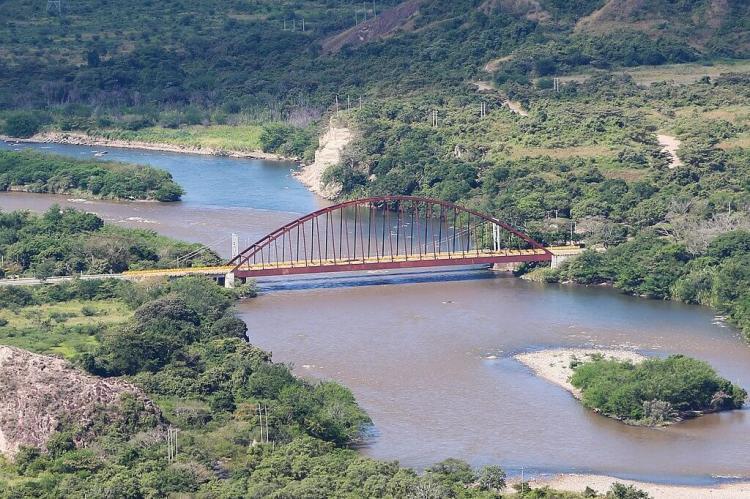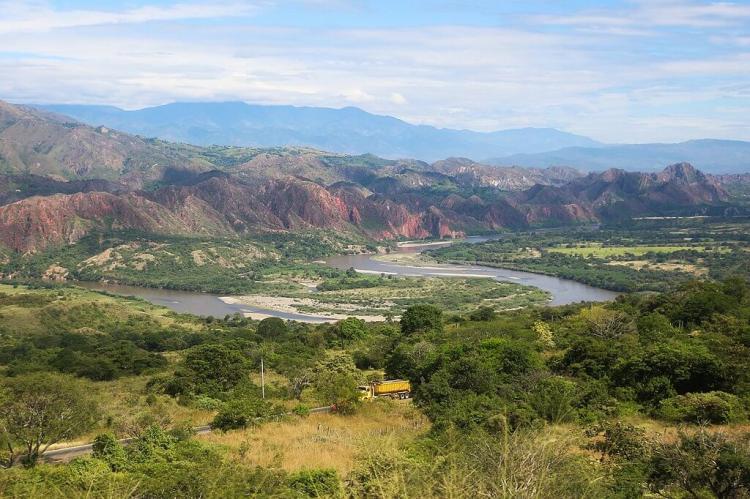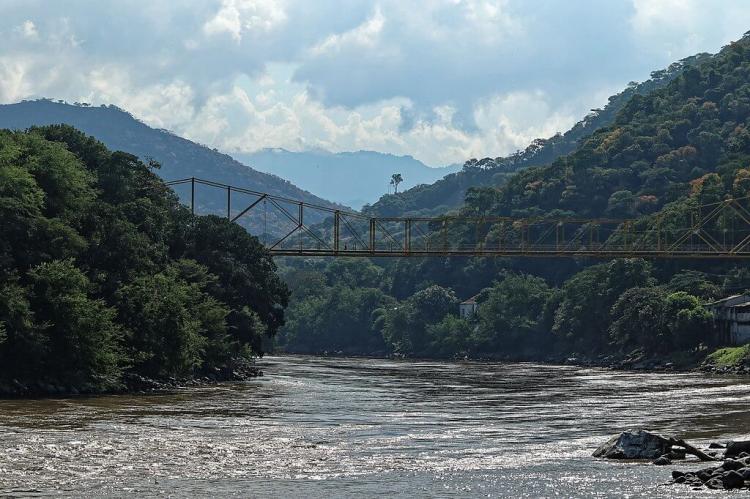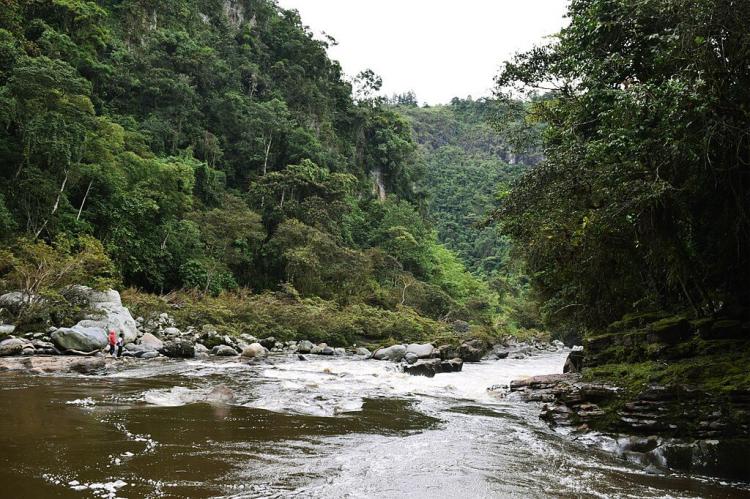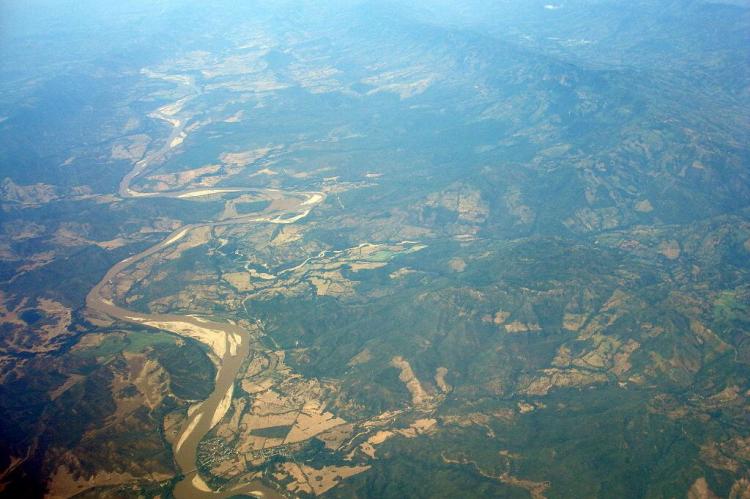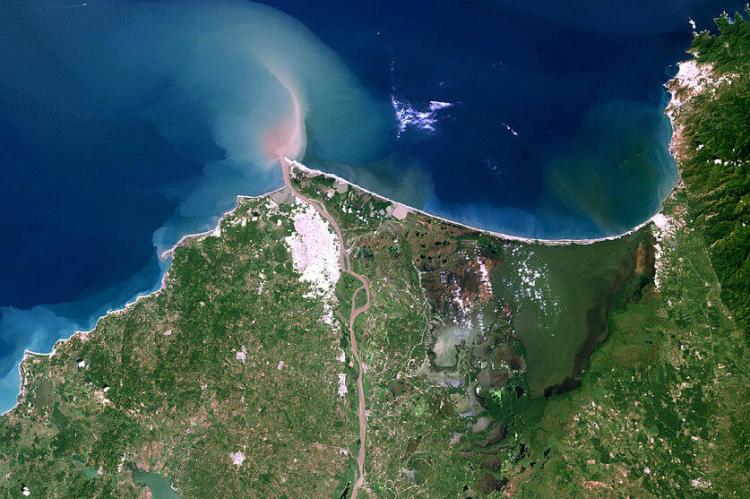Magdalena River and Basin: Colombia's Lifeline
Flowing through the heart of Colombia, the Magdalena River is the country's principal waterway, weaving its way from the towering peaks of the Andes to the Caribbean Sea. Carving a path through diverse landscapes, this mighty river and its expansive basin serve Colombia's lifeblood.
Magdalena River and Basin: Colombia's Lifeline
Flowing gracefully through the heart of Colombia, the Magdalena River stands as the country's principal waterway, weaving its way from the towering peaks of the Andes to the sun-kissed shores of the Caribbean Sea. Carving a path through diverse landscapes and ecosystems, this mighty river and its expansive basin serve as the lifeblood of Colombia, nurturing vibrant communities, sustaining vital ecosystems, and shaping the nation's cultural and economic landscape.
Geographical Features and Hydrological Overview
Originating at the convergence of the Central and Oriental Cordilleras in southwestern Colombia, the Magdalena River embarks on a remarkable journey spanning approximately 1,528 kilometers (949 miles) before reaching its destination on the Caribbean coast near Barranquilla. From its humble beginnings at the Magdalena Lagoon, nestled at an elevation of 3,685 meters (12,000 feet), the river meanders northward, traversing diverse terrain and ecosystems along its course.
The topography of the Magdalena River basin varies significantly along its length, reflecting the region's geological complexity. In the southern reaches, the river originates amidst the rugged peaks and deep valleys of the Andean highlands in the southern reaches, where the Central and Oriental Cordilleras converge. The landscape is characterized by steep slopes, rocky cliffs, and dense montane forests.
As the river flows northward, it gradually transitions into lowland plains and coastal deltas, where vast expanses of wetlands, marshes, and mangrove forests dominate the landscape. The fertile floodplains of the Magdalena Valley, nourished by the river's annual inundations, support lush vegetation and agricultural cultivation, serving as a vital lifeline for local communities and wildlife alike.
Hydrological Characteristics: The Magdalena River's hydrological regime is influenced by a combination of factors, including precipitation patterns, snowmelt from the Andean glaciers, and groundwater discharge. The river experiences distinct seasonal variations in flow and water levels, with peak flows typically occurring during the wet season from April to November. During this time, heavy rainfall in the Andean foothills and upper basin contributes to significant runoff, leading to elevated water levels and increased sediment transport downstream.
Navigational Challenges: Navigation along the Magdalena River has long been a critical aspect of transportation and trade in Colombia. However, the river's journey is not without challenges. Rapids near the town of Honda briefly interrupt its flow, posing obstacles to navigation and requiring infrastructure development, such as locks and channels to facilitate river transport. Despite these challenges, the navigable stretch of the Magdalena River extends for roughly 1,000 kilometers (620 miles), providing a vital transportation artery connecting remote communities and bustling cities.
Ecosystem Services: Besides its role in transportation and trade, the Magdalena River basin provides essential ecosystem services that support local communities and biodiversity. Riparian zones, wetlands, and floodplains along the river corridor are crucial in regulating water flow, filtering pollutants, and providing habitat for various aquatic and terrestrial species. The basin supports more than 2,700 species of animals, many of which are endemic to the region, including the Grey-legged Night Monkey (Aotus griseimembra), various species of birds, reptiles, amphibians, mammals, and fish.
Human Impact and Conservation Efforts: Human activities within the Magdalena River basin have profoundly impacted its ecological health and hydrological dynamics. Agricultural expansion, urbanization, and deforestation have led to habitat loss, water pollution, and increased vulnerability to natural disasters such as floods and landslides. However, there is growing recognition of the need to promote sustainable land use practices, restore degraded ecosystems, and foster community engagement in river conservation initiatives to ensure the long-term health and resilience of the Magdalena River and its basin.
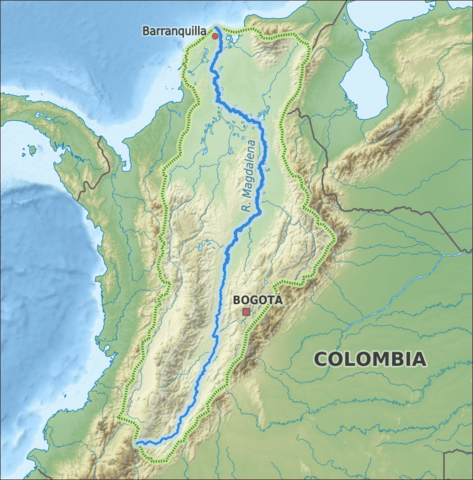
Topographical map depicting the Rio Magdalena.
Magdalena River Basin: A Crucible of Life and Prosperity
The expansive Magdalena River Basin encompasses over 272,000 square kilometers (105,000 square miles) of diverse landscapes, including Andean highlands, fertile valleys, and coastal plains. Home to 80% of Colombia's population and spanning 19 of the country's 32 departments, the basin serves as a vital economic and cultural hub, driving agricultural production, commerce, and urban development.
The basin's fertile soils and temperate climate support a rich tapestry of agricultural activities, including coffee cultivation, corn production, and cacao farming. Additionally, the river basin plays a crucial role in supplying drinking water to 38 million people and generating hydroelectric and thermoelectric power, with dams such as Betania and Quimbo contributing significantly to the country's energy needs.
Tributaries: A Network of Lifeblood
The Magdalena River owes much of its grandeur to its extensive network of tributaries, which nourish its flow and contribute to its ecological richness. Among the notable tributaries are:
- Cauca River: Serving as the primary tributary of the Magdalena, the Cauca River originates in the Colombian Andes and merges with the Magdalena near the city of Barrancabermeja.
- Nare River: Originating in the Central Cordillera of the Colombian Andes, the Nare River flows south to north, eventually joining the Magdalena River near Puerto Berrío.
- LeBrija River: The Lebrija River, formed by the confluence of the Suratá River and the Río de Oro, originates in the Eastern Ranges of the Colombian Andes and joins with the Magdalena River near the Loma de Corredor, Puerto Wilches, Santander.
- San Jorge River: Beginning its journey in Paramillo National Park, the San Jorge River meanders between the mountains of San Geronimo and Ayapel before flowing into the Cauca River in Sucre Department.
- La Miel River: Originating in the Cordillera Central of the Colombian Andes, the La Miel River flows south to north, eventually joining the Magdalena River near La Dorada.
- Cabrera River: Emerging from the Cordillera Oriental of the Colombian Andes, the Cabrera River flows south to north, eventually joining the Magdalena River near Honda.
- Sogamoso River: Formed by the confluence of the Chicamocha River and the Suárez River, the Sogamoso River originates in the Eastern Ranges of the Colombian Andes and flows northward until it joins with the Magdalena River near Barrancabermeja.
- Carare River: Originating in the Eastern Ranges of the Colombian Andes, the Carare River flows northward, joining the Sogamoso River near Puerto Parra.
- Cesar River: Emerging from the Sierra Nevada de Santa Marta, the Cesar River flows north to south, eventually joining the Magdalena River near Gamarra.
- Páez River: Originating in the Western Cordillera of the Colombian Andes, the Páez River flows south to north, eventually joining the Magdalena River near the village of Remolino del Vicho.
These tributaries, originating from various mountain ranges and national parks, converge with the Magdalena, enriching its waters and supporting diverse ecosystems along its banks. They play a vital role in the river's hydrological cycle, contributing to its flow and fostering biodiversity within the Magdalena River basin.
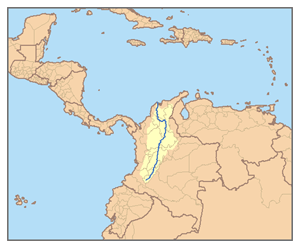
Map depicting the location of the Magdalena watershed.
Flora and Fauna: Guardians of Biodiversity
The Magdalena River and its vast basin are not only geographical marvels but also biodiversity hotspots, nurturing a rich tapestry of flora and fauna that contribute to the region's ecological resilience and cultural heritage.
Flora Diversity: The basin's diverse ecosystems, ranging from tropical rainforests to Andean cloud forests, provide habitats for an extraordinary array of plant species. Towering hardwood trees, including mahogany, cedar, and kapok, dominate the dense forests that cloak the riverbanks and foothills of the Andes. These forests are also home to a myriad of orchid species, some of which are found nowhere else on Earth, adding to the region's botanical diversity.
Fauna Diversity: The Magdalena River and its tributaries support a remarkable diversity of wildlife, with over 2,700 species of animals recorded in the basin. Among these are charismatic megafauna such as jaguars, tapirs, and spectacled bears, which roam the pristine forests of the Magdalena Valley. The elusive Grey-legged Night Monkey, endemic to Colombia, symbolizes the region's biological uniqueness, while playful river otters frolic in the river's clear waters.
Avian Abundance: Birdwatchers flock to the Magdalena River basin to catch glimpses of its vibrant avian residents. The region boasts an impressive diversity of bird species, including colorful toucans, macaws, and parrots that flit among the treetops, their calls echoing through the forest canopy. Endemic species such as the Santa Marta Wren and the Magdalena Antbird add to the allure of birdwatching in this biodiverse paradise.
Aquatic Life: The river's marine ecosystems are equally diverse, harboring many fish species, amphibians, and reptiles. Manatees, gentle giants of the river, glide gracefully beneath the surface, while caimans and crocodiles bask in the sun on sandy riverbanks. Colorful freshwater fish, including cichlids and catfish, thrive in the river's currents, sustaining wildlife and local fishing communities.
Conservation Challenges and Efforts: Despite its ecological richness, the Magdalena River basin faces numerous conservation challenges, including habitat destruction, pollution, and overexploitation of natural resources. Deforestation, driven by agricultural expansion and illegal logging, threatens the integrity of the region's forests, while pollution from farm runoff and industrial discharge contaminates waterways and degrades aquatic habitats.
In response to these threats, various conservation organizations and governmental agencies have launched initiatives to protect and restore the biodiversity of the Magdalena River basin. These efforts include establishing protected areas, such as national parks and wildlife reserves, as well as community-based conservation projects to promote sustainable land use practices and foster environmental stewardship among local communities.
Conclusion: A Tapestry of Life and Legacy
In conclusion, the Magdalena River and its basin epitomize Colombia's intersection of nature, culture, and commerce. From its towering peaks to its tranquil waters, this majestic river weaves a tapestry of life and legacy, shaping the destiny of millions and safeguarding the nation's natural heritage. As Colombia's lifeline and guardian of biodiversity, the Magdalena River is a testament to the enduring bond between humanity and the environment, inspiring awe and reverence for future generations.
